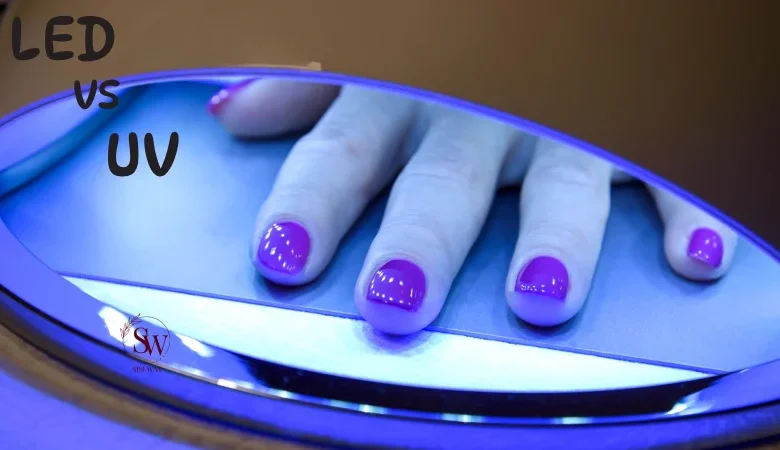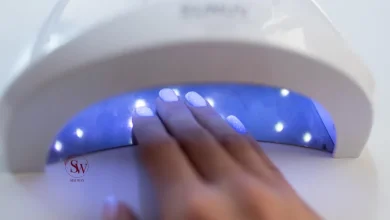UV Lamp VS Led for Nails

Are LED and UV Nail Lamps the Same?
In recent years, the popularity of gel manicures has soared, leading to an increased demand for efficient and effective nail curing technologies. Two common methods that have revolutionized the nail industry are UV lamps and LED lamps. These lamps emit light in different spectrums, each with its own advantages and considerations. In this article of sisiway, we will explore the differences between UV lamps and LED lamps for nails, helping you make an informed decision about which technology is best suited for your manicure needs.
Understanding UV Lamps:
UV lamps, short for ultraviolet lamps, have been widely used in the nail industry for several decades. Traditional UV lamps emit broad-spectrum ultraviolet light, specifically UVA and UVB, to cure gel nail polishes. The curing process involves the photoinitiators in the gel polish reacting to the UV light, resulting in a hardened and long-lasting manicure.
Read more: Top 10 Nail Polish Brands
Benefits of UV Lamps:
- Faster Curing Time: UV lamps generally have a faster curing time compared to LED lamps. This is because UV light covers a wider spectrum, allowing it to penetrate the polish and cure it more quickly.
- Compatibility: UV lamps are compatible with most gel nail polishes available on the market, making them a versatile choice for professional and at-home use.
- Cost-Effective: UV lamps tend to be more affordable compared to LED lamps, making them a budget-friendly option.
Considerations for UV Lamps:
- Potential UV Exposure: UV lamps emit ultraviolet light, which can potentially pose a risk of skin damage with prolonged exposure. However, the exposure during a typical nail curing session is relatively low and can be minimized by using sunscreen or protective gloves.
- Lifespan: The bulbs in UV lamps have a limited lifespan and may require periodic replacement, which can be an additional cost over time.
Understanding LED Lamps:
LED lamps, or light-emitting diode lamps, are a more recent development in nail curing technology. They emit a narrower spectrum of light, specifically in the visible range, without producing significant amounts of UV radiation. LED lamps are typically used to cure gel nail polishes formulated with photoinitiators that are responsive to visible light.
Benefits of LED Lamps:
- Energy Efficiency: LED lamps consume less energy compared to UV lamps, resulting in lower electricity bills and a smaller carbon footprint.
- Longevity: LED bulbs have a longer lifespan compared to UV bulbs, thus reducing the need for frequent replacements.
- Safer for Skin: LED lamps emit significantly less UV radiation, minimizing the risk of potential skin damage during the curing process.
Considerations for LED Lamps:
- Compatibility: While LED lamps are compatible with most gel nail polishes, some older formulations may not cure as effectively under LED light. However, most modern gel polishes are formulated to work with LED lamps.
- Curing Time: LED lamps generally have a longer curing time compared to UV lamps due to the narrower spectrum of light. However, advancements in LED technology have reduced this gap significantly, and curing times are now comparable for many gel polishes.
Difference Between UV and LED Nail Lamp
| UV Nail Lamp: | LED Nail Lamp: | |
| Light Source | UV nail lamps use traditional fluorescent bulbs that emit a broad spectrum of ultraviolet (UV) light, including UVA and UVB wavelengths. | LED nail lamps use light-emitting diodes (LEDs) to emit specific wavelengths of light, typically in the visible spectrum. They do not emit significant amounts of UV radiation |
| Curing Time | UV lamps generally have faster curing times compared to LED lamps. The broad spectrum of UV light allows for efficient curing of gel nail polishes, resulting in quicker manicure sessions. | LED lamps generally have longer curing times compared to UV lamps. The narrower spectrum of light emitted by LEDs requires more time for effective curing of gel nail polishes. |
| Compatibility | UV lamps are compatible with most gel nail polishes available on the market. They have been used in the nail industry for a long time and are considered a standard choice. | LED lamps are compatible with most gel nail polishes, but some older formulations may not cure as effectively under LED light. It is important to check compatibility with specific gel polishes before using them with an LED lamp. |
| Safety | UV lamps emit UV light, which can potentially pose a risk of skin damage with prolonged exposure. It is recommended to use sunscreen or protective gloves during the curing process to minimize UV exposure. | LED lamps are considered safer for the skin because they emit minimal UV radiation. This reduces the risk of potential skin damage during the curing process. |
| Energy Efficiency | UV light devices, like UV lamps, are not as energy efficient as LED lights. LED lamps are a more energy-efficient option, consuming less electricity and resulting in lower operating costs. | LED lamps are more energy-efficient compared to UV lamps, resulting in lower electricity consumption and reduced operating costs. |
| Lifespan | UV lamps require periodic bulb replacements as the bulbs have a limited lifespan. This can add to the cost and maintenance of the lamp over time. | LED bulbs have a longer lifespan compared to UV bulbs, reducing the need for frequent replacements and lowering maintenance costs. |
| Portability | UV light devices, such as UV lamps, can be less portable due to their larger size and bulkier design. Consider smaller, more compact alternatives like portable UV LED devices for on-the-go use. | LED lamps are often smaller, lighter, and more portable compared to UV lamps. This makes them a preferred choice for individuals who need a portable nail curing solution. |
In summary, UV nail lamps use UV light to cure gel nail polishes, have faster curing times, and are compatible with most gel polishes. However, they emit UV radiation and require bulb replacements. LED nail lamps use LED light, have longer curing times, are safer for the skin, and are more energy-efficient. They are compatible with most gel polishes, have a longer bulb lifespan, and are often more portable. The choice between UV and LED lamps depends on factors such as curing time, compatibility, safety concerns, energy efficiency, and portability preferences.
Also read: How Do I Strengthen My Nails?
Is LED or UV Nail Lamp Better?
The choice between a UV nail lamp and an LED nail lamp depends on your specific needs, preferences, and priorities. Both types of lamps have their advantages and considerations. Here’s a summary to help you make a decision:
UV Nail Lamp:
– Pros:
– Generally faster curing times.
– Broad compatibility with most gel nail polishes.
– Commonly used in the nail industry.
– Cons:
– Emit UV radiation, which may pose a potential risk of skin damage with prolonged exposure.
– Require periodic bulb replacements, adding to maintenance costs.
– Tend to generate more heat during the curing process.
LED Nail Lamp:
– Pros:
– Safer for the skin as they emit minimal UV radiation.
– More energy-efficient, resulting in lower electricity consumption and operating costs.
– Longer bulb lifespan, reducing the need for frequent replacements.
– Often smaller, lighter, and more portable.
– Cons:
– Generally longer curing times compared to UV lamps.
– Some older gel polish formulations may not cure as effectively under LED light (although most modern gel polishes are formulated to be compatible with LED lamps).
Ultimately, the “better” option depends on your priorities. If faster curing times and broader compatibility are important to you, a UV nail lamp might be the better choice. However, if safety, energy efficiency, longer bulb lifespan, and portability are more significant factors, an LED nail lamp could be the better option.
Consider your specific needs, preferences, budget, and concerns about UV exposure and maintenance when making your decision. It may also be helpful to read reviews, seek recommendations, and consider trying out both types of lamps if possible before making a final choice.
FAQ
- Are UV lamps or LED lamps more energy-efficient for nails?
UV lamps are generally less energy-efficient compared to LED lamps. LED lamps consume less electricity, resulting in lower operating costs.
- Is it safe to use UV lamps for nail curing?
UV lamps emit UV radiation, which can pose a potential risk of skin damage with prolonged exposure. It is recommended to use sunscreen or protective gloves during the curing process to minimize UV exposure.
- Which type of lamp is more portable for nail treatments?
LED lamps are often smaller, lighter, and more portable compared to UV lamps. They are a preferred choice for individuals who value portability and need a nail curing solution on the go.
Conclusion:
Both UV lamps and LED lamps have their own advantages and considerations when it comes to nail curing. UV lamps offer faster curing times and broader compatibility, making them a popular choice in the industry. On the other hand, LED lamps are more energy-efficient, safer for the skin, and have a longer lifespan. When choosing between the two, consider factors such as compatibility with your gel nail polish, curing time requirements, budget, and concerns about UV exposure. Ultimately, both UV lamps and LED lamps can deliver beautiful and long-lasting manicures, so it’s a matter of personal preference and specific needs.
Also read: Does Nail Polish Expire?



